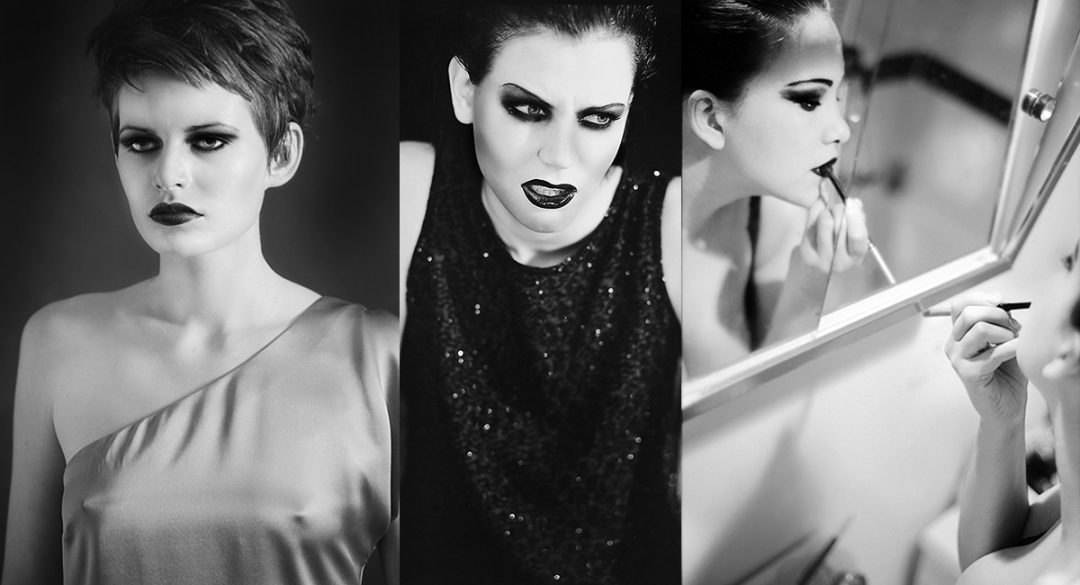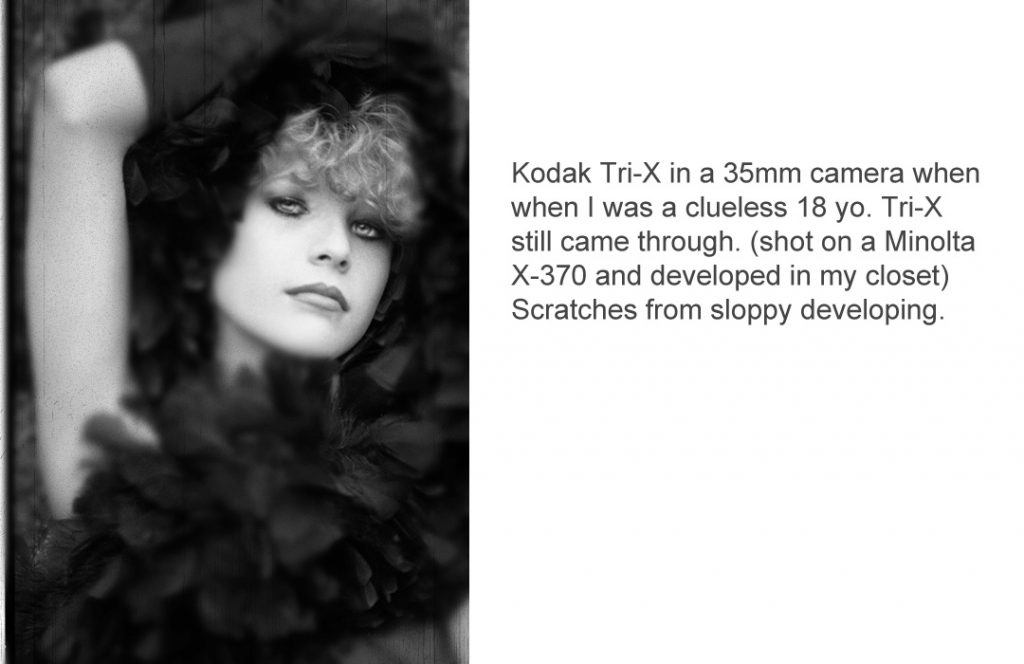The Tri-X Mystique
When I first was writing this, I thought, “oh, cool, I’ll use a bunch of Helmut Newton or maybe Avedon images”. But then I realized I have no idea which images of theirs are attributed to Kodak Tri-X film. Maybe they used Ilford, or Agfa. Except for the quote, “Marc Picot [Hemut Newton’s printer] also suggested that the Tri-X might be overexposed for those skin tones.” But, it’s the internet, so take most of what you read with a grain of salt. 😉

However, with the exception of a couple I knew personally, such as the lighting director for Herb Ritts, or the few assistants I’ve known, I actually have no first hand knowledge. I suppose I can make educated guesses looking at the toe and contrast. But by the time it has been scanned so it’s digitally viewable, I have no idea. I knew this was going to be the most difficult category!

So, you’re stuck with images I actually took. As many are quite old, it is in no way self promotion. It’s just to show what’s typical in the ‘people realm’. I must confess that no filters were used in any. Except the standard UV filter. But that was mostly for lens protection. Either way, it’s one of the films I’m happy are still available.
Kodak Tri-X Film – Very Malleable
The girl putting on make-up is on camera flash shot at 320 iso. (putting on lipstick) Nikon F5, 50mm lens. The image below is 120 Tri-X shot in natural light. (no flash, no fill) Rolleiflex 6008, 80mm Zeiss. As you can see, it responds well in just about every condition. These were just developed normally with Kodak D-76, 1:1, which I still use to this day. Actually, people constantly ask me about my film developing process. I’m unsure why, as I personally feel it’s the fiber based paper, burning and dodging, and contrast choices when printing that make the most impact on an image. But, I’m fine sharing. (yes, I use stop bath,…it’s dirt cheap)
400 box speed Tri-X shot at @320
Kodak D-76 1+1
Develop film in tank for 9 ½ minutes at 68° F
- 45 seconds continuous hard inversions.
Then, 3 light inversions every minute.
- Water Wash 10 minutes Under Running water that’s about 68° F
- Kodak Indicator Stop Bath about 10-15 sec
- Wash again 10 sec
- Ilford Rapid Fixer 1+4 for 4 minutes
- After fixing, fill the tank with water at about the same temperature, +/– 10º F, and invert it 5 to 7x. Drain the water away and refill. Invert the tank about 10x. Once more drain the water away and refill. Invert the tank about 20x and then drain tank.
- Once tank is drained, Kodak Photo-Flo 200:1 for about 20-30 seconds. (I mix with distilled water, not tap) Some prefer just using a squeegee, but PhotoFlo is cheap, and keeps water spots off. (for me)
And, that’s it. Nothing special. I’m sure many others have their own favorite developers and procedures. But that has always been mine. 😊

Again, no filter was used, and only daylight. I guess you can say this is a typical Kodak Tri-X film output in terms of contrast when shot at it’s 320 iso. Paper grade was 2 or 3.
Always Nice Contrast – High or Low
Almost an infinite dynamic range! Ok, maybe “infinite” is a bit much. And nice contrast even when pushed or pulled. Although I prefer controlling contrast in the darkroom. (which is why I shoot @320 ISO) And, yes, they still make Tri-X in 320 ISO,…but only in large format sheet film. I suppose you can see a typical Tri-X output in all lighting situations. But lenses used, filters used and the ambient scene will attribute to that contrast on the negative itself to some degree. All in all, Kodak Tri-X film has always come through in a pinch. Push it, pull it,…it always seems to behave well. I call it the “taffy of films”. Buying in bulk can save a lot of money. However, I’ve also used expired and have had no problems. But with that,…”you pays your money, and you takes your chances”.
One thing I must mention. In the video, the guy thinks Tri-X just comes in 35mm and 120 only. That’s false. It also comes in 4×5, 5×7 and 8×10 sheet film. (not to mention 100 ft. 35mm rolls, Super 8 reversal and 16mm reversal film.)


I appreciate everything you say yes it’s the film par excellence we can try others from time to time but the star that guides you in the night the landmark is always there it’s the Tri X I use it in 35mm at 400 iso for me and I love it and coupled with D76 the top I find the HC 110 sec.
good pictures